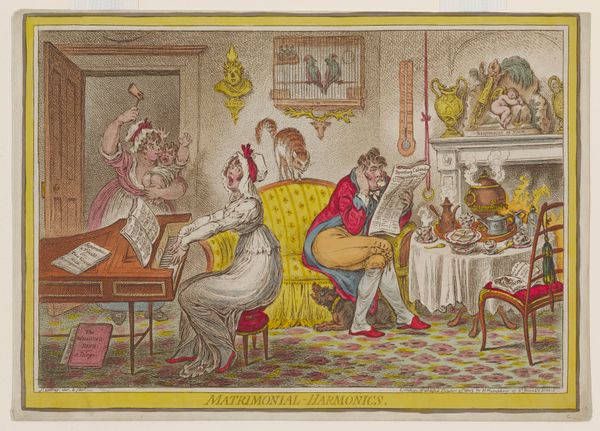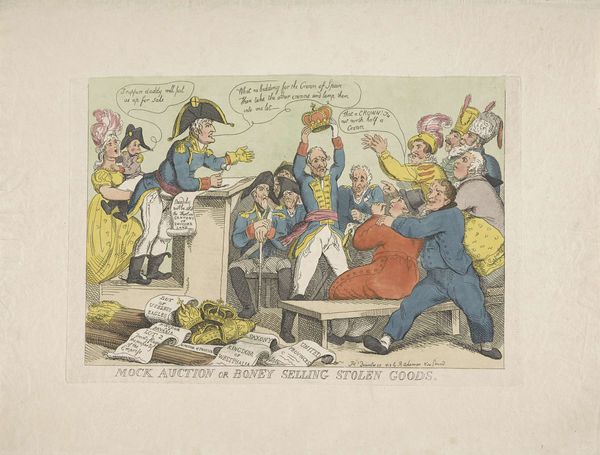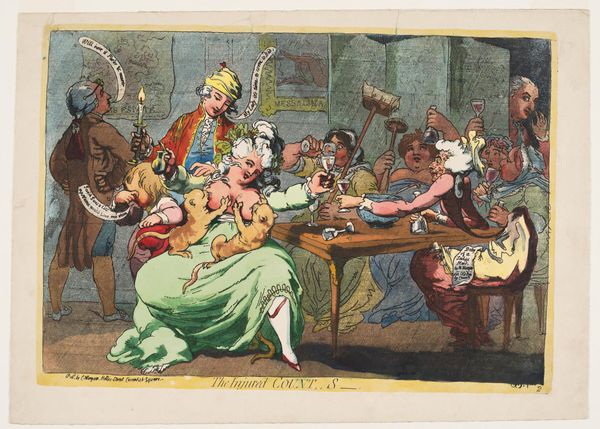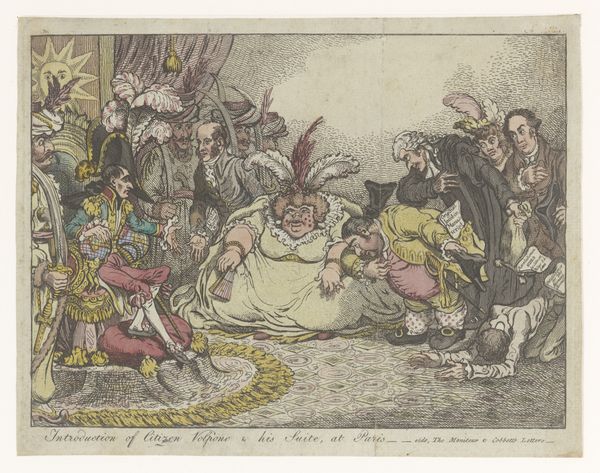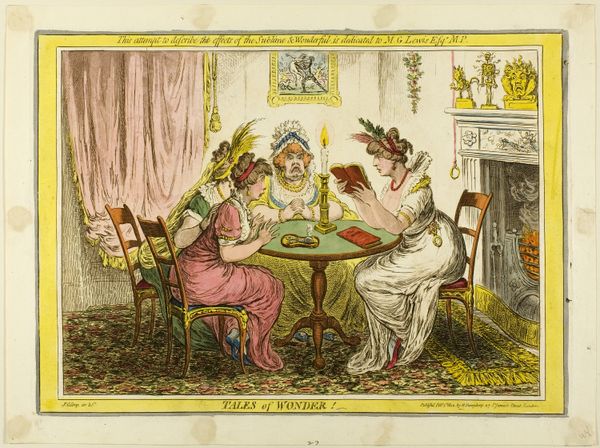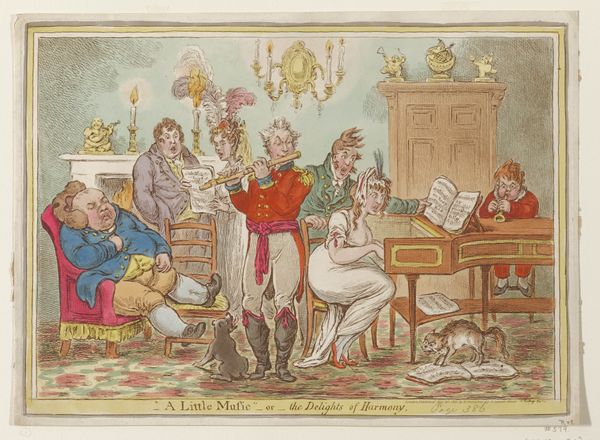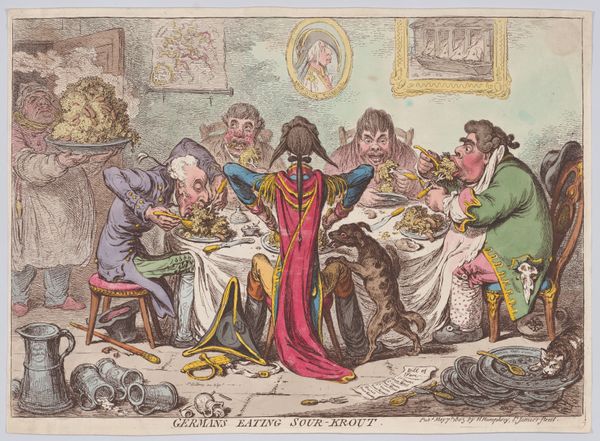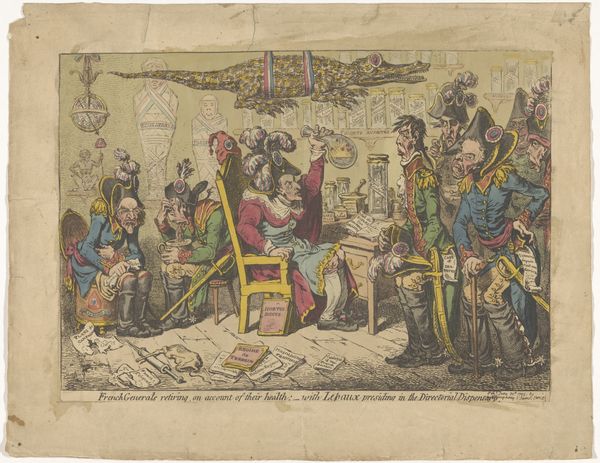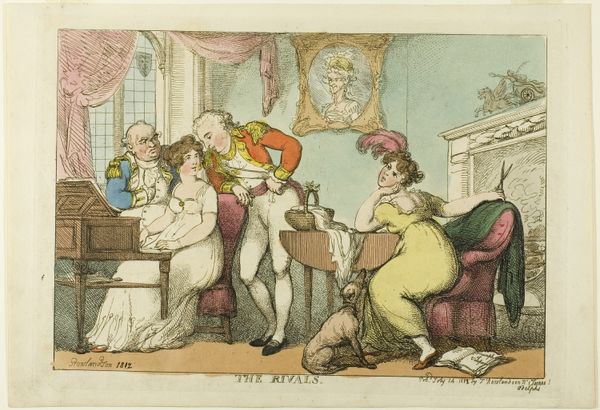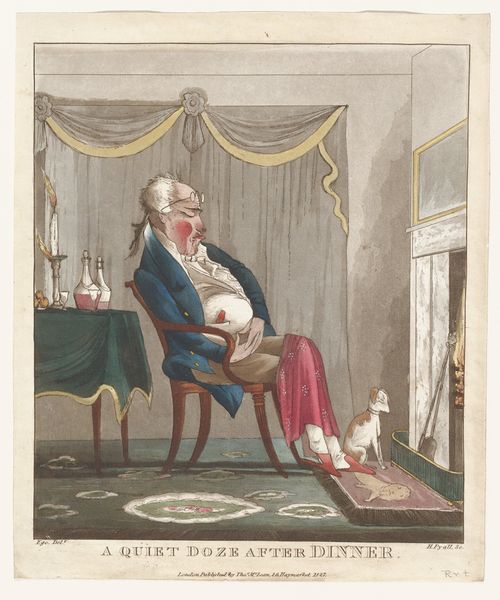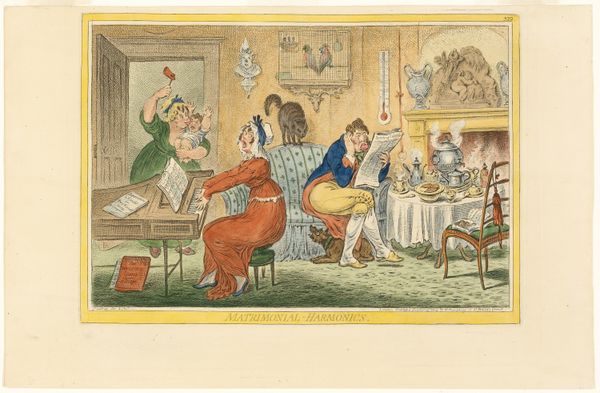
Dimensions: 10 x 14 in. (25.4 x 35.56 cm) (sheet)
Copyright: Public Domain
This hand-colored etching was made by James Gillray, probably in the 1790s. It satirizes the fashion for light, diaphanous muslin dresses. The material is highly flammable, as the woman standing by the fire has just discovered. Muslin was one of the first globally traded commodities. It was originally made in India from labor-intensive, hand-spun cotton. The East India company then scaled up production with industrial processes, importing the cloth into Britain. This made muslin affordable, and highly desirable. But as Gillray points out, there was a downside to the fabric. Here, the artist cleverly uses fire to represent the cost of fashion, and its dependence on global trade and industrial labor. It’s a reminder that clothes are never just clothes; they’re also tied to wider social issues of labor, politics, and consumption. And the fact that muslin is so readily flammable is a commentary on the risks involved.
Comments
minneapolisinstituteofart about 2 years ago
⋮
Gillray dedicated this print to the "Fashionable Ladies of Great Britain," poking fun at the vogue for white muslin dresses. Inspired by the carved drapery of Greek and Roman statues, this loose-fitting fabric was usually worn with a high Empire waist. The neoclassical tea service that is crashing to the floor alludes to other classically inspired trends emerging in London at the time.
Join the conversation
Join millions of artists and users on Artera today and experience the ultimate creative platform.

